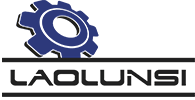Unlocking Precision: How Gear Skiving Machines Revolutionize Gear Manufacturing
Unlocking Precision: How Gear Skiving Machines Revolutionize Gear Manufacturing Table of Contents 1. Introduction to Gear Manufacturing and Skiving Technology 2. What is Gear Skiving? 3. Benefits of Gear Skiving Machines in Manufacturing 3.1 Precision and Accuracy 3.2 Increased Efficiency 3.3 Cost-Effectiveness 4. Key Applicati
Unlocking Precision: How Gear Skiving Machines Revolutionize Gear Manufacturing
Table of Contents
- 1. Introduction to Gear Manufacturing and Skiving Technology
- 2. What is Gear Skiving?
- 3. Benefits of Gear Skiving Machines in Manufacturing
- 4. Key Applications of Gear Skiving Machines
- 5. How Gear Skiving Machines Operate
- 6. Comparison with Other Gear Manufacturing Methods
- 7. The Future of Gear Skiving Technology
- 8. Frequently Asked Questions (FAQs)
- 9. Conclusion
1. Introduction to Gear Manufacturing and Skiving Technology
In the rapidly evolving landscape of manufacturing, the demand for precision-engineered components—especially gears—has skyrocketed. **Gear skiving machines** have emerged as a groundbreaking solution in this realm, redefining how gears are produced. These machines utilize a unique cutting process that combines the advantages of shaping and hobbing, enabling manufacturers to achieve high precision and efficiency in gear production.
The **gear manufacturing industry** plays a pivotal role in various sectors, including automotive, aerospace, and industrial machinery. With the increasing complexity of gear designs and the need for enhanced performance, traditional manufacturing methods are often insufficient. The advent of gear skiving technology addresses these challenges head-on, setting new benchmarks for quality and productivity.
2. What is Gear Skiving?
Gear skiving is a specialized machining process used to create gears with intricate features and exceptional accuracy. This method involves the use of a skiving cutter, which operates in a helical motion relative to the workpiece, enabling it to simultaneously remove material from the gear’s flanks and tooth profiles. The result is a finished gear that exhibits superior surface quality and dimensional precision.
Unlike conventional gear cutting methods, gear skiving allows for the manufacturing of gears with complex geometries, including internal and external gears, splines, and various tooth profiles. The machine’s ability to adjust cutting parameters in real-time further enhances its versatility and effectiveness, making it a preferred choice for modern manufacturers.
3. Benefits of Gear Skiving Machines in Manufacturing
3.1 Precision and Accuracy
One of the most significant advantages of gear skiving machines is the unparalleled **precision** they offer. The helical motion of the skiving cutter ensures consistent engagement with the workpiece, significantly reducing the tolerance levels of the finished product. This heightened accuracy is especially crucial in applications where gear performance directly impacts the functionality of complex machinery.
3.2 Increased Efficiency
Gear skiving machines significantly boost manufacturing **efficiency** by reducing cycle times compared to traditional methods. The skiving process allows for the simultaneous cutting of multiple teeth, leading to faster production rates. Furthermore, the elimination of secondary processes—such as finishing—often required in other machining techniques makes skiving an attractive option for manufacturers aiming to streamline their operations.
3.3 Cost-Effectiveness
Investing in gear skiving technology can yield substantial long-term **cost savings** for manufacturers. The enhanced production rates and reduced labor costs associated with automated skiving processes contribute to lower overall manufacturing expenses. Additionally, the superior quality of skived gears leads to fewer rejections and less waste, further enhancing the cost-effectiveness of this method.
4. Key Applications of Gear Skiving Machines
The versatility of gear skiving machines allows them to cater to a wide array of applications across various industries. Some notable applications include:
- **Automotive Industry**: Used for manufacturing transmission gears, differential gears, and other critical components.
- **Aerospace Sector**: Ideal for producing gears that require extreme precision and reliability in highly demanding environments.
- **Industrial Machinery**: They are utilized for gears in pumps, compressors, and various machinery that requires high torque and performance.
The capability to handle diverse gear types and sizes makes gear skiving machines an essential asset for modern manufacturing settings.
5. How Gear Skiving Machines Operate
The operating principle of gear skiving machines is relatively straightforward yet highly effective. The process begins with the workpiece being securely clamped in place while the skiving cutter rotates at high speeds. As the cutter moves in a helical path, it engages with the gear material, removing chips and shaping the gear profile.
The key components of a gear skiving machine include:
- **Skiving Cutter**: This is the heart of the operation, designed with teeth that match the desired gear profile.
- **Workpiece Holder**: A robust mechanism that securely holds the gear blank during the skiving process.
- **Control System**: Modern gear skiving machines come equipped with advanced CNC systems that allow for precise adjustments and programming of cutting parameters, enhancing repeatability and accuracy.
This combination of components ensures an efficient and effective gear manufacturing process, capable of producing high-quality gears with minimal intervention.
6. Comparison with Other Gear Manufacturing Methods
When evaluating gear skiving machines, it’s essential to consider how they stack up against traditional gear manufacturing methods:
- **Hobbing**: While hobbing is widely used for gear production, it often requires additional finishing processes to achieve the desired surface quality. Gear skiving, on the other hand, typically produces a superior surface finish in a single pass.
- **Shaping**: Gear shaping can be slower than skiving and is limited to specific gear types. Skiving offers greater versatility, accommodating a broader range of gear profiles and sizes.
- **Broaching**: Although broaching is effective for internal gears, it can be more costly and time-consuming. Gear skiving machines provide a faster and more economical alternative without compromising quality.
Each method has its place in the industry, but gear skiving machines offer a compelling combination of speed, accuracy, and cost-effectiveness that is hard to overlook.
7. The Future of Gear Skiving Technology
As the manufacturing landscape continues to evolve, so too will the technology behind gear skiving machines. Innovations in materials, cutting tools, and control systems are paving the way for even greater advancements in gear manufacturing.
Emerging trends, such as the integration of **Industry 4.0 principles**, are likely to enhance the capabilities of gear skiving machines. This includes the use of IoT technology for real-time monitoring and predictive maintenance, further improving efficiency and reducing downtime.
Moreover, as manufacturers increasingly prioritize sustainability, gear skiving machines will play a crucial role in minimizing waste and energy consumption in the production process.
8. Frequently Asked Questions (FAQs)
1. What types of gears can be produced using gear skiving machines?
Gear skiving machines can produce a wide variety of gears, including internal gears, external gears, splines, and specialized tooth profiles.
2. How does gear skiving compare to hobbing in terms of cost?
While initial investments in gear skiving machines might be higher, the overall cost savings, reduced cycle times, and lower waste levels make skiving a more cost-effective option in the long run.
3. Is maintenance required for gear skiving machines?
Yes, regular maintenance is essential to ensure optimal performance and longevity. This includes routine cleaning, checking cutting tool wear, and ensuring proper lubrication.
4. Can gear skiving machines operate automatically?
Many modern gear skiving machines are equipped with CNC controls, allowing for full automation and precise programming of cutting parameters.
5. What industries benefit the most from gear skiving technology?
Industries such as automotive, aerospace, and industrial machinery significantly benefit from gear skiving technology due to the high precision and efficiency it offers.
9. Conclusion
Gear skiving machines represent a **revolutionary advancement** in the gear manufacturing industry. Their ability to produce high-precision gears with enhanced efficiency and cost-effectiveness sets them apart from traditional methods. As manufacturers seek to meet the growing demands for quality and productivity, embracing gear skiving technology will undoubtedly play a pivotal role in shaping the future of gear manufacturing. By investing in this innovative technology, companies can unlock new levels of precision and performance in their gear production processes, ensuring they remain competitive in an increasingly challenging market.
Recommended Blogs
The Future of Manufacturing: Groundbreaking Innovations in Gear Machining Centers
The Future of Manufacturing: Groundbreaking Innovations in Gear Machining Centers Table of Contents 1. Introduction to Gear Machining Centers 2. The Importance of Gear Machining in Modern Manufacturing 3. Technological Advancements Shaping Gear Machining Centers 4. The Role of Automation and Robotics in Gear Machining 5. Precision Engineering in Gear Machining Centers 6. Sustainabilit
Understanding Hypoid Gear Cutting Machines: Innovations in Gear Manufacturing
--- Hypoid gear cutting machines play a vital role in the manufacturing and machining of hypoid gears, which are widely used in various applications due to their unique properties. These machines are specifically designed to produce gears that feature a non-parallel shaft arrangement, allowing for efficient transmission of power at different angles. Understanding the mechanics and benefits of hypo
A Comprehensive Exploration of External Gear Cutting Machine Mechanics
A Comprehensive Exploration of External Gear Cutting Machine Mechanics Table of Contents 1. Introduction to External Gear Cutting Machines 2. Importance of External Gear Cutting in Manufacturing 3. The Mechanics Behind External Gear Cutting 4. Types of External Gear Cutting Machines 5. Key Components of External Gear Cutting Machines 6. The Gear Cutting Process: Step-by-St







